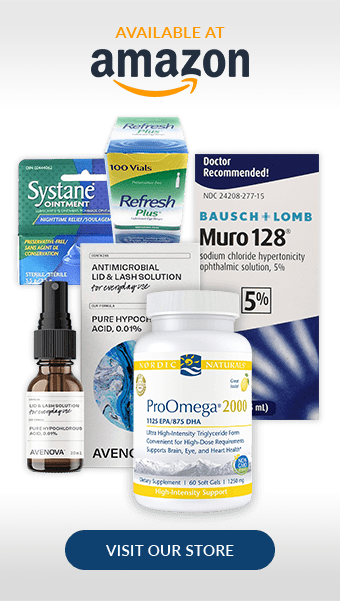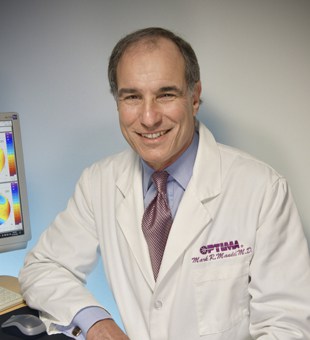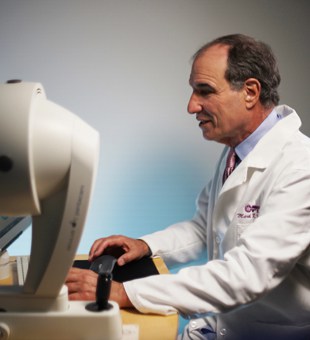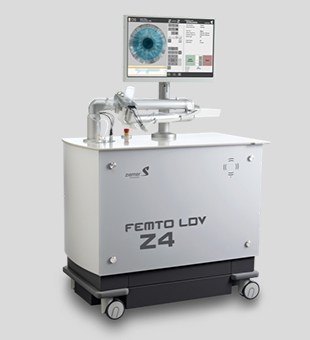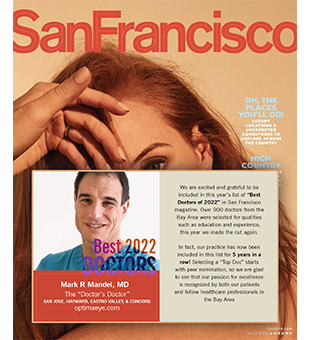Serving San Jose, Hayward, Castro Valley, & Concord

The surface of the eye is covered with a lining of tears called the tear film. The tear film is made up of three layers: a Lipid (oil) layer which lubricates and prevents evaporation of the water layer of tears; an Aqueous (water) layer, which nourishes and protects the eye surface; and a Mucin layer, which allows the water layer to adhere to the eye. Since the tear film is exposed directly to the air, the outer protective lipid layer is essential to maintaining a healthy tear film on the eye.
When the protective lipid layer of the tear film is lacking, the eye surface can become irritated and dry eye symptoms can occur.
Dry Eye Disease Affects More Than 100 Million People Worldwide
Of those, 65 percent suffer from Evaporative Dry Eye as a result of poor quality oil or not enough oil. Common symptoms of dry eye include dryness, grittiness, soreness, irritation, burning, watering, and eye fatigue. These symptoms can hinder people’s daily activities such as reading, using the computer, wearing contact lenses and being outdoors on windy days, or in an air conditioned environment. Many dry eye patients complain that symptoms worsen throughout the day.
Other factors that can contribute to a dry eye are poor blinking and not fully closing the eye at night, or a loose lower eyelid. Some patients do not fully blink. An “incomplete blink” will not allow the tears to lubricate the entire surface of the eye (like a defective windshield wiper), and can contribute significantly to the dry eye. Additionally, some people (especially after upper eyelid lifts/blepharoplasty) do not completely close the eye at night. This can dry out the lower part of the eye and cause considerable symptoms. Redundant conjunctiva (the white lining of the eye) also called conjunctivochalasis can also lead to symptoms of dry eyes. This can be easily repaired by a minor surgical procedure.
Dry Eye After LASIK Surgery
The LASIK procedure itself can either precipitate a dry eye, or exacerbate an underlying dry eye. Accordingly, as not only LASIK specialists but also experts in the cornea and external eye, we strive to ensure that you will have the best possible result from your LASIK procedure. If we diagnose a dry eye prior to your LASIK procedure, we must postpone the surgery until the dry eye is resolved. We realize that this can be extremely disappointing and inconvenient to the patient who has planned for and is excited about their upcoming LASIK. However, your safety is our primary concern and we will do nothing to compromise your care and everything to ensure that you have an outstanding result. To this end, we must vigorously treat your dry eye condition before proceeding with the laser procedure.
Treating the dry eye is a team approach. The patient, my staff, your optometrist, and myself will be intimately involved in your care. Your cooperation and compliance with our recommendations is critical to ensure a salubrious result and will require some sacrifice on your part. This will be a short-term sacrifice for a long-term gain. Specifically, you must stop or decrease your contact lens wear while we are treating the dry eye. We are aware that patients accustomed to contact lens wear will find it extremely annoying and difficult to not wear contact lenses – particularly someone with high degrees of nearsightedness and astigmatism. Some patients may even need to purchase new spectacles. However, the use of the contact lens will exacerbate the dry eye and significantly prolong the treatment. Most importantly, we ask for your patience with the seemingly long time it takes to improve. It is not uncommon for us to treat the dry eye for up to six months before we can proceed with your LASIK.
Your treatment will consist of a number of different steps designed to increase the moisture available to the surface of your eye. It may be necessary to see you 6 to 8 times while treating the dry eye before we are able to proceed with your LASIK procedure.
As mentioned above, a dry eye can develop following the LASIK procedure, especially in women. This can be annoying and will require one or more of the treatment steps delineated below. Fortunately, most cases of post-LASIK dry eye are self-limiting and resolve within 9 to 12 months.
Conventional Dry Eye Treatment Options
Artificial Tears: The mainstay treatment for the dry eye is the frequent application of non-preserved artificial teardrops. We will recommend certain teardrops, but any non-preserved drop in a vial is acceptable. Please do not use a bottled teardrop, even if they claim to be “non-preserved.” We usually start by having you apply one drop every hour.
Omega 3 (dietary supplement): Flax seed oil, or fish/krill oil, which is rich in omega 3 fatty acids, have been shown to be effective in treating the dry eye. This can be taken as 2 gel-caps twice a day with meals. It may take at least 6 to 8 weeks to show positive effects. I recommend Nordic Naturals ProOmega 2000 which is the triglyceride form of fish oil and is best absorbed by the body with no unpleasant side effects. This is available on our website.
Punctal Plugs: The eye is constructed somewhat like a sink. There is a “faucet” located up under your eyebrow which produces tears, a drain in the lower lid by your nose, and a drain in the upper lid by your nose. In order to fill the sink, if your faucet is not working properly, we must close one or both of the drains. This not only preserves the natural tears that your eye makes, but also allows the artificial tear to stay in contact with the ocular surface for a longer period of time. We will start by closing the lower drain (punctum) with a permanent, but removable, silicone plug. Patients can occasionally feel the plug for the first few days after insertion and notice some itching of the lower lid by the nose. If closure of the lower drain is not effective, then after 4 to 6 weeks we may elect to close the upper drain. In some patients both the upper and lower drains are plugged at the same time. Occasionally, closure of the upper drain may result in watering of the eye and the patient may request removal of the upper drain plug due to excessive tearing.
Other Medications: We may add anti-inflammatory drops such as Restasis (cyclosporine), Xiidra or Cequa eye drops. These are non-preserved drops and may be effective in helping resolve the dry eye. However, like all medications, they do not work in every case and may have to be discontinued due to irritation. We may also add doxycycline, minocycline or azithromycin (an antibiotic pill taken orally), which can be an effective adjunctive treatment. Occasionally, we may recommend serum tears. These are special tears compounded by a specialty pharmacy and made out of the components of your own blood, which contains many very powerful healing properties not found in prescription medications.
LipiFlow Dry Eye Treatment
While the conventional treatment methods can provide temporary relief from irritating dry eye symptoms, LipiFlow dry eye treatment can help restore natural production of oils and deliver long-term results in six to eight weeks.
Cost of Dry Eye Treatment
The cost for plug insertion and the cost of the follow-up visits are not included in the price of your LASIK surgery, but are often covered by insurance. We participate in most, but not all, medical and eye care insurance plans in the Bay Area. If we are a participating provider, then we will assist you in billing your insurance for treatment.
We know that the treatment of the dry eye can be complex, occasionally confusing, and prolonged. Although we share in your frustration, we are committed to providing you with the highest quality care and will not compromise the safety of your eye or the outcome of your procedure by proceeding with laser vision correction prior to the rehabilitation of your dry eye. Fortunately, in decades of practice I have rarely seen a case of dry eye in a young, otherwise healthy patient that did not resolve with treatment.
Schedule a Consultation Today
At Ophthalmic Medical Associates, we understand how uncomfortable dry eye can be. We are committed to offering a range of the most advanced dry eye treatments to accommodate the needs of all of our patients in the San Jose and East Bay area. If you would like to learn more about dry eye treatment, contact our practice today at 877-210-2020 ext. 3.

